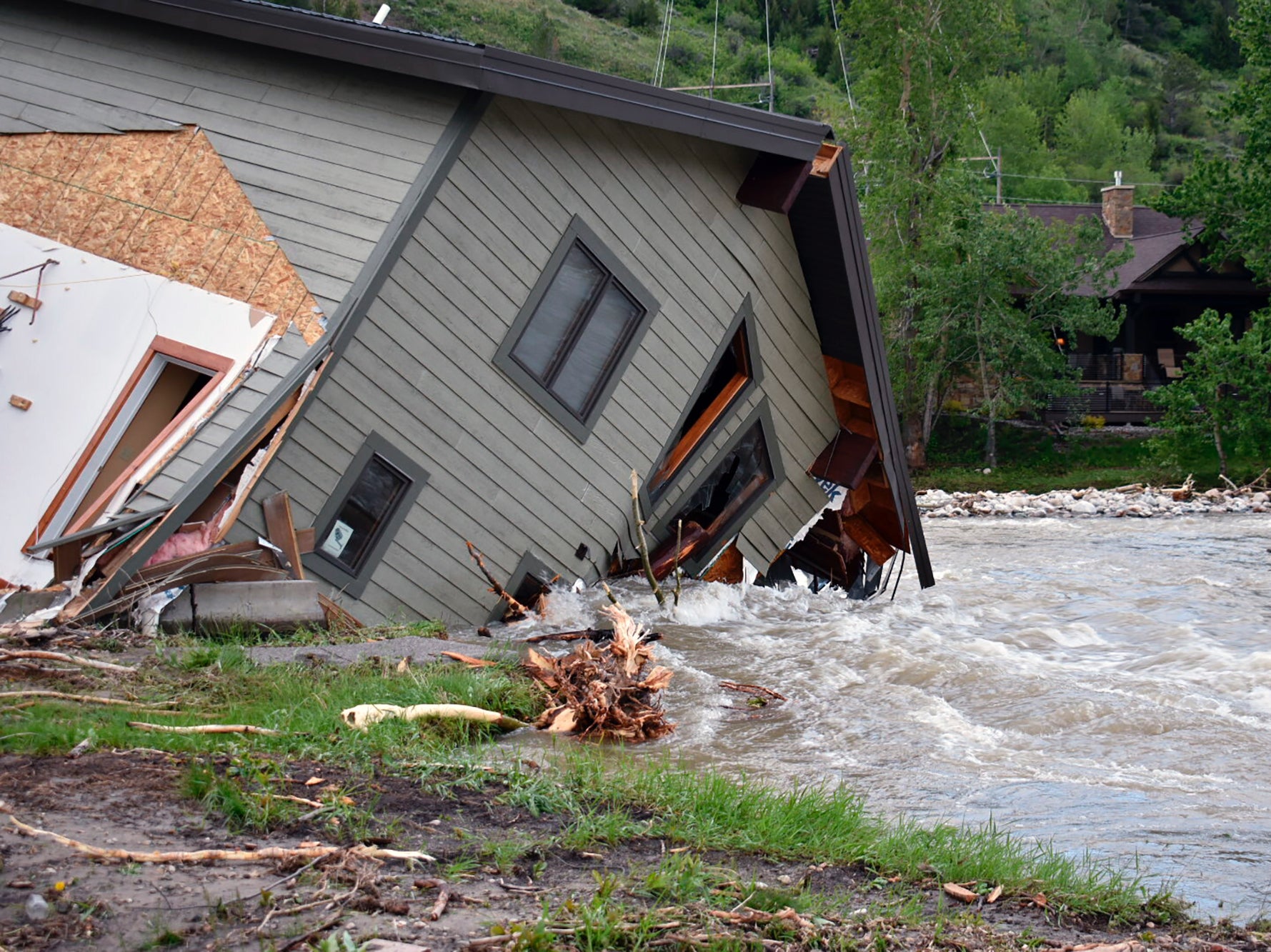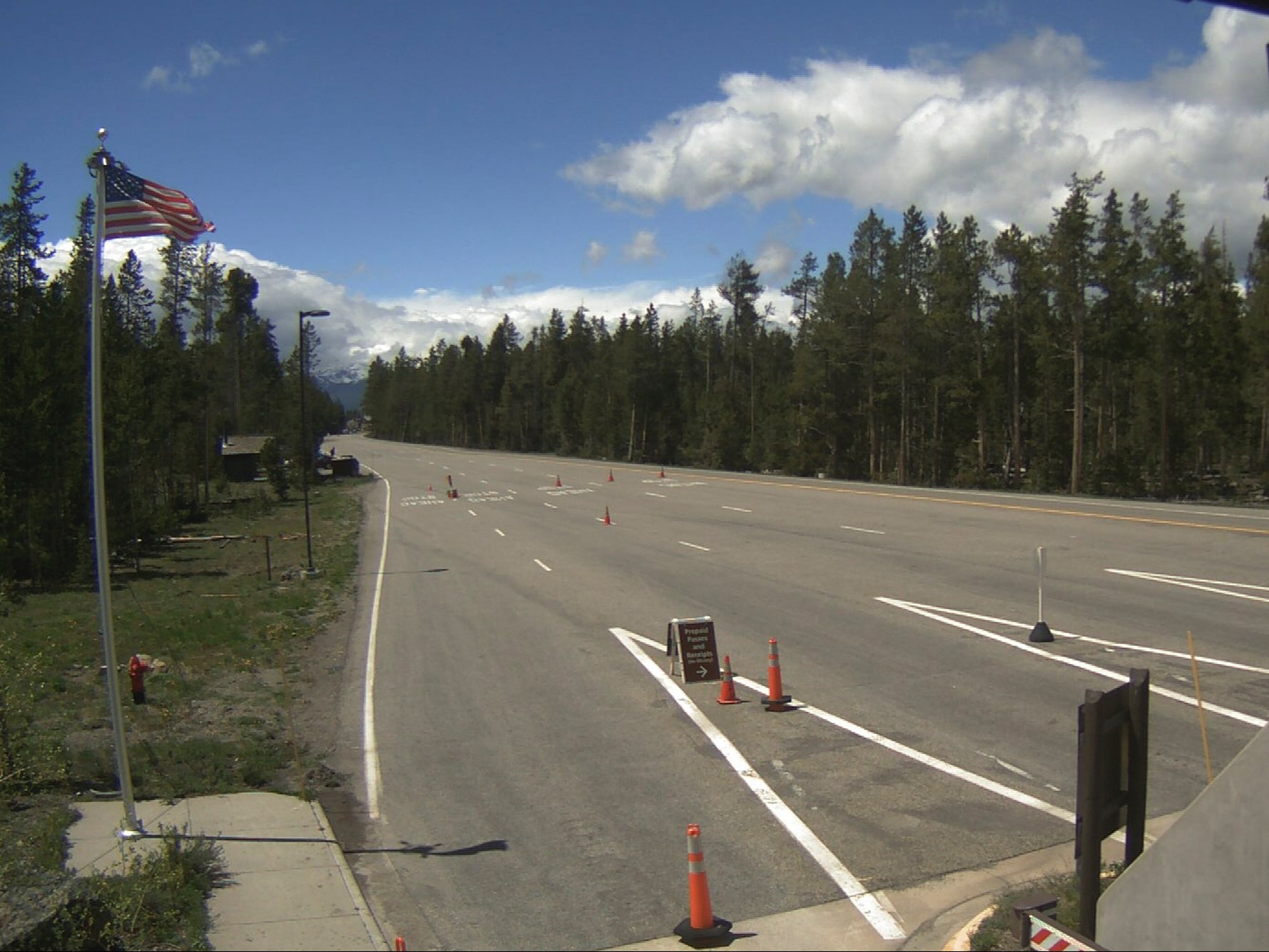Yellowstone flooding – live: Tourists warned National Park closed for months as video shows perilous escape
Flooding caused mudslides and widespread destruction
Your support helps us to tell the story
From reproductive rights to climate change to Big Tech, The Independent is on the ground when the story is developing. Whether it's investigating the financials of Elon Musk's pro-Trump PAC or producing our latest documentary, 'The A Word', which shines a light on the American women fighting for reproductive rights, we know how important it is to parse out the facts from the messaging.
At such a critical moment in US history, we need reporters on the ground. Your donation allows us to keep sending journalists to speak to both sides of the story.
The Independent is trusted by Americans across the entire political spectrum. And unlike many other quality news outlets, we choose not to lock Americans out of our reporting and analysis with paywalls. We believe quality journalism should be available to everyone, paid for by those who can afford it.
Your support makes all the difference.More than 10,000 people have been evacuated from Yellowstone National Park, as dangerous flood waters have knocked out bridges and roads, as well as causing mud slides.
Heavy rains and snow melt caused the Yellowstone River to jump its banks, prompting widespread destruction and toppling riverside properties.
All five entrances to the park, which gets hundreds of thousands of visitors a year, have been closed to visitors for the first time in 34 years. Officials say the landscape has ben changed “literally”.
All visitors aside from a single group of backpackers have left the park, according to officials. Emergency crews are prepared to potentially rescue the group.
The north entrance of the park is expected to be closed all summer as officials seek to repair damaged infrastructure.
Lt. Gov. visits Red Lodge while governor out of state
Montana’s lieutenant governor Kristen Juras visited Red Lodge on Tuesday as governor Greg Gianforte remains out of the state, as his office said on Tuesday.
Ms Juras, who signed the governor’s disaster declaration as acting governor, was photographed with the Montana Red Cross in the southern Montana town, where some of the worst flooding has been seen,
The Red Cross has set-up evacuation shelters in multiple towns.
Tourists and residents stranded in Gardiner
In Gardiner, a town near Yellowstone’s northern entrances, both residents and tourists have been effectively stranded by the floodwater.
Visitors sheltering in motels have been seen wandering the streets of the tourist town, which has seen roads swamped and homes destroyed, reports said.
Gardiner resident Victoria Britton told The Washington Post that by early Monday morning, the river had claimed about 10 feet of the bank in front of their home, wiping out her garden.
Water levels are still at record high levels, the National Weather Service has said.
Ms Britton said she and her husband gathered as many belongings as possible into three vehicles before moving into a motorhome on the other side of Highway 89, which passes the southern Montana town.
Reports also say at least two pregnant women have been airlifted by helicopter from Gardiner since the flooding began.
Town had trout swimming through Main Street
Floodwater swamped the main thoroughfare in Red Lodge, leaving trout swimming in the street a day later, the Associated Press reported.
At least 200 homes were flooded in the southern Montana town and the nearby town of Fromberg as a result of the floodwaters on Monday.
In Red Lodge, a town of 2,100 that’s a popular location for Yellowstone visitors, a creek running through town burst its banks – leading to houses submerged, telephone polls toppled and other damage.
Electricity was restored by Tuesday, althoughw there is still no running water in the affected neighborhood. Some of the flooding can be seen in the image below:

Yellowstone has ‘literally and figuratively’ changed
The floodwaters that have damaged road infrastructure and forced 10,000 people to evacuate from Yellowstone have also changed the landscape of the national park dramatically. “The landscape literally and figuratively has changed dramatically in the last 36 hours,” said Bill Berg, a commissioner in nearby Park County, to the Associated Press.
“A little bit ironic that this spectacular landscape was create by violent geologic and hydrologic events, and it’s just not very handy when it happens while we’re all here settled on it,” he added. River levels remain at a record high and at “major flood” stage, the National Weather Service in Billings, Montana, has said.
Yellowstone County Superintendent Cam Sholly added of the destruction: “I’ve heard this is a 1,000-year event, whatever that means these days. They seem to be happening more and more frequently”.
A warming climate means more flooding...
Extreme weather events like the Yellowstone flood are associated with a warming climate, which will likely see more frequent rain and flooding as a result of higher temperatures.
Rick Thoman, a climate specialist at the University of Alaska Fairbanks, told the Associated Press extreme weather events would be more common and that this week’s floods would not be likely “without the warming that human activity has caused”.
“Will Yellowstone have a repeat of this in five or even 50 years? Maybe not, but somewhere will have something equivalent or even more extreme,” he said.
The flooding in Montana and Wyoming comes as parts of the Midwest and East Coast experience a severe heat wave. Drought and wildfires are ongoing concerns for many regions.
Some Yellowstone attractions will likely reopen
The anticipated months-long closure of the northern part of the Yellowstone National Park will keep visitors from features that include Tower Fall, Mammoth Hot Springs and the Lamar Valley.
Many visitors visit those spots to see wildlife such as bears and wolves, as well as elks.
Old Faithful, Yellowstone Lake and the Grand Canyon of the Yellowstone are in the southern section of the park and are likely to be reopened, as the Associated Press reported.
Helicopter video shows extent of flood emergency
Dramatic video footage shot from helicopters above the flooded Yellowstone River have shown how far the damage extends throughout the 150-year-old national park.
Surging waters that have forced 10,000 people to evacuate the national park can be seen in the below video, as well as significant damage to road infrastructure.
Water levels are falling in some parts of the southern Montana and northern Wyoming area and warnings remain in place, authorities say. Montana has meanwhile made a disaster declaration.
Water levels in Billings still at ‘major flood stage'
The National Weather Service station in Billings, Montana, has said water levels on the Yellowstone River in the city are still at record levels, with the last recorded height at 16.02ft.
“At 330 am, the Yellowstone River in Billings remains above Major Flood stage,” the station said. “Exactly how high the river is is a bit unsure with flood waters impacting the gauge a bit at these higher levels, but have not seen a downturn trend yet. Above record levels since 4pm yesterday”.
Road closures continue in Billings
In Billings, a city on the Yellowstone River in southern Montana, road closures were still in place overnight as one river-level sensor malfunctioned, the sheriff’s office said.
River banks were holding on Tuesday night and water levels west of Billings on the Yellowstone River are dropping, the sheriff’s office added. The National Weather Serivce says water levels in Billings continue to remain at record levels.
Aerial images shared by the sheriff’s office on Facebook showed the flooding extending throughout Billings, which is home to museums and other attractions popular with visitors to the Yellowstone National Park.
Yellowstone closure could last months
While water levels are receding in and around Yellowstone National Park, the northern entrances of the park may stay shut for months and well into the summer.
Yellowstone Superintendent Cam Sholly told the Associated Press that many of the entrances could remain closed for a week, but the northern entrances – which have seen the worst of the flooding – could be shut for much longer.
Summer is typically the busiest time for Yellowstone National Park, which celebrates its 150th anniversary this year. Below is an image of a western entrance from the park’s webcam:




Join our commenting forum
Join thought-provoking conversations, follow other Independent readers and see their replies
Comments